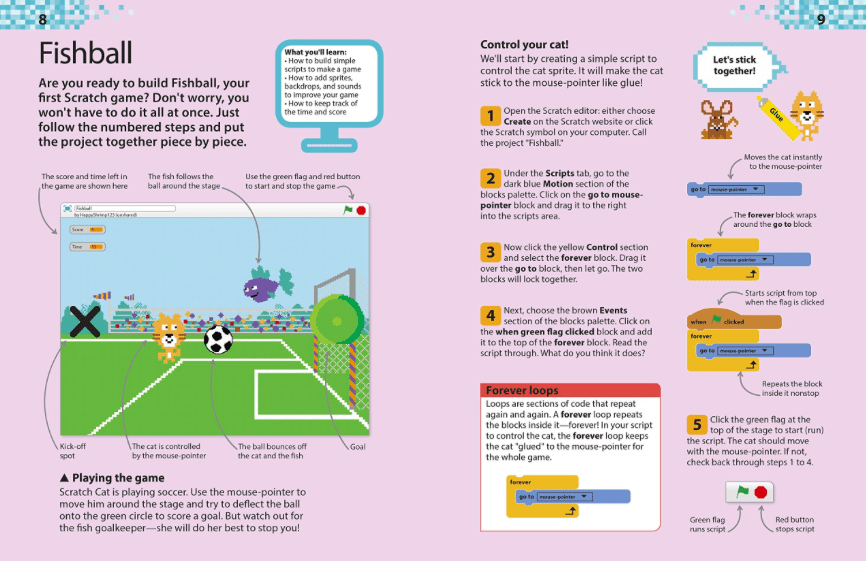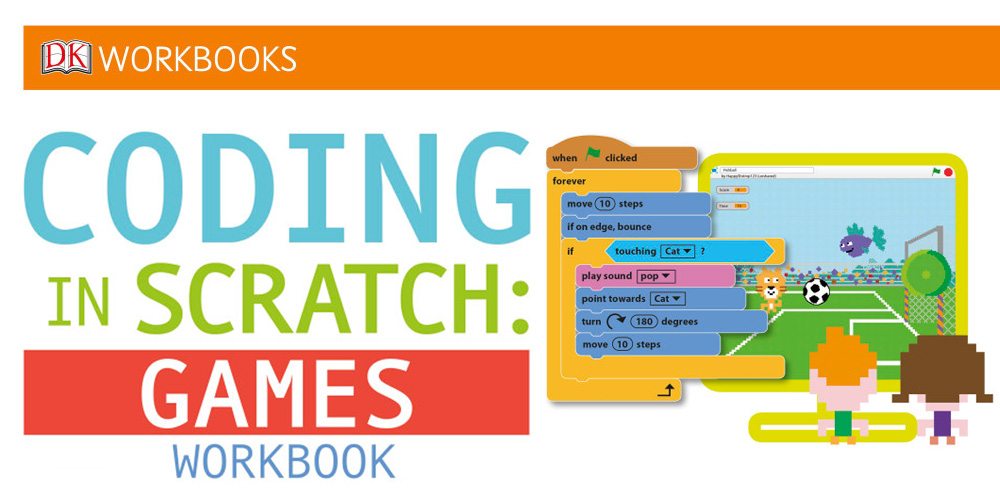I taught a week-long camp last summer titled ‘Beginning Game Programming” — I had a morning session (8am-12pm) and an afternoon session (1pm-5pm), and each class had 16 kids anxious to learn some new skills and, of course, play some games. The camp was for kids entering 3rd through 7th grade — this was sort of a shot-in-the-dark decision based on my oldest son (age 8 and entering 3rd in Fall 2015) and what I’d seen him capable of with certain programming tools and apps.
Needless to say, the camp was a hit. The kids got hands-on with a number of game development platforms as well as an introduction to Python and a signed copy of Teach Your Kids to Code (review here) to take home from the author, Dr. Bryson Payne, who also came and gave a short talk on programming to both groups.
For Summer 2016, I’ll once again be offering the camp to the same age group, but I’m also pondering an ‘Intermediate Game Programming’ camp for those students who took last year’s camp. I’ve also had a few requests from parents of younger children for a similar type of camp, but it won’t be happening in 2016. That said, in order to even consider the request, I’ve been examining various apps and books to see just how I might go about introducing programming concepts to a younger audience. I’ve been looking for something to recommend to parents as a simple way to gauge the interest of a child in programming without being overly complicated or lengthy.

The solution I found came from DK Publishing, who kindly provided me an advanced look at a new workbook they have prepared that uses the free Scratch 2.0 programming environment created by MIT. The book is titled Coding in Scratch: Games Workbook (DK Publishing, out January 5, 2016) and this 40-page full-color workbook is perfect. PERFECT. Written by Jon Woodcock and Steve Setford, the book is broken into seven sections that are of perfect length for young programmers ages 9+:
Meet Scratch (pages 4-5) introduces the young reader to Scratch 2.0 and covers the basics of the Stage, sprites, scripts, and libraries. It doesn’t go deep, but that’s not necessary as most young programmer will quickly pick up the various areas on the screen and the simple tools and interface. At the end of the section is a short six-question quiz.
Exploring Scratch (pages 6-7) gives a nice detailed look at the user interface and uses callouts to point out the various areas of importance on the screen. For attentive readers, the full-color graphics and mini-game (moving dinosaurs around on the stage) are probably enough to grab their attention and get them moving on to the next section.

Fishball (pages 8-17) gives a step-by-step, numbered tutorial to build a simple game that involves kicking a soccer ball into a net. The programmer will add Scratch Cat (a standard sprite) as the player-controlled character on the screen. What I appreciate most about this first game tutorial is how it’s broken up into sections — add the cat, program its movement, test it… and then move on to next section (Add the soccer ball). The script never gets too complicated, and explanations for each block are provided so the young reader won’t get lost. As the game tutorial progresses, scoring and timer are added as well as the goalie (a fish). The section wraps up with a full page color quiz.
Ghost Hunt (pages 18-23) provides more fundamentals of Scratch programming such as using a coordinates system, using a keyboard for movement (versus the mouse), and music. Again, a full-page color quiz ends the section.
Rapid Reaction (pages 24-29) provides a tutorial for creating a two-player game. While the game is very simplistic, it’s the tools that are important here — the young programmer will learn to create custom graphics as well as how to provide instructions for a game. More script blocks are introduced and a full page quiz will test to make sure the reader is comprehending and retaining.

Melon Bounce (pages 30-34) takes everything the reader has learned (such as coordinates system and controlling sprites) and wraps it up with this final game where the Scratch Cat must keep melons bouncing into the air – if a melon hits the ground, the game is over. The last full page quiz ends the section.
Solutions (page 35-39) provides the answers to all the quizzes.
Getting Scratch (page 40) provides a parent or teacher with the steps needed to download and install Scratch on a computer (if the Internet isn’t available — Scratch can be run from a web browser).
There will be a lot of kids who can sit down with this workbook all on their own and work through the tutorials, but the workbook is also quite suitable for a parent or teacher who wishes to supervise and answer questions. It’s short and sweet and I believe is a great way to test the waters and see if it grabs a child’s attention.
Note: Coding In Scratch: Games Workbook is from DK Publishing and is out now.





Both my kids, Elsie 8 yrs and Gideon 12, like to fool around with scratch and impress me with what they come up with on their own. Gideon has made games on the level of the ones described in the book above. Do you have any suggestions for resources to help them take it to the next level?
Non-flash based websites are preferred since they do the majority of their work on Raspberry Pi 2s.
Check out the titles from No Starch. They have some excellent books on Scratch that really push the limits of what that tool can do… specifically, this title – https://www.nostarch.com/learnscratch
You should also check out the Teach Your Kids to Code book that introduces Python. It’s outstanding.
For a slightly more advanced look at Scratch I like the book “Learn to Program with Scratch” by Majed Marki, published by No Starch Press.
Ha! I just saw your response AFTER I recommended the same book to Roger! It IS a good book!
So this is what the cool kids are using these days!